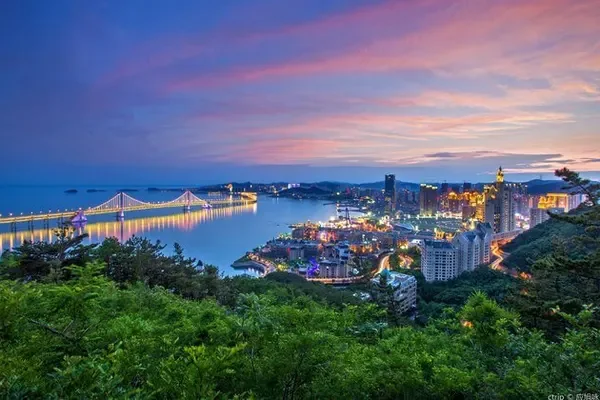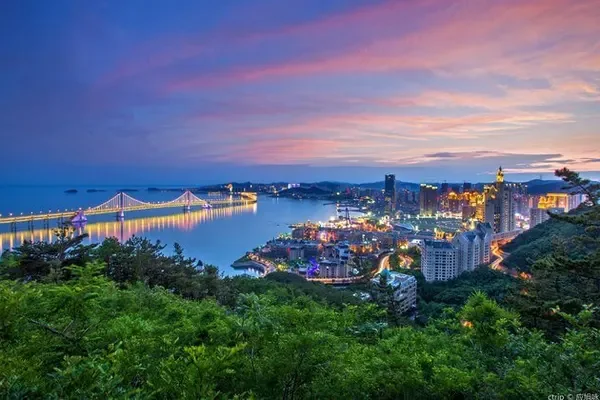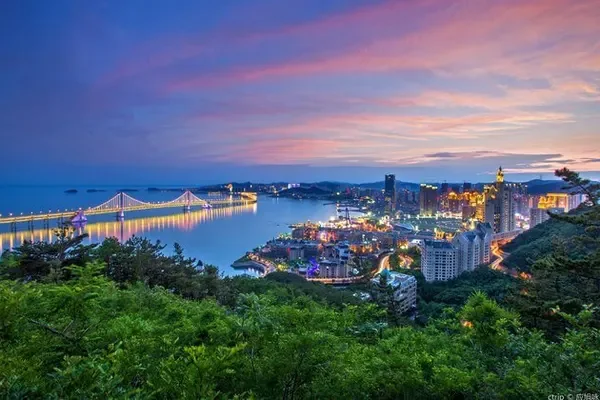I took the train to Lanzhou and passed Ningxia more than 20 years ago. I clearly remember that there was a stop at Qingtongxia. I saw a water conservancy project on the map and it was developed into a scenic spot. Later, when I went to Ningxia, I heard from local friends that Qingtongxia Yellow River Grand Canyon is worth visiting. This is the last canyon in the upper reaches of the Yellow River. It is known as the "Little Three Gorges of the Yellow River". The canyon is more than 10 kilometers long, and the cliffs on both sides are more than 30 meters high. Rough, majestic, and magnificent, it is also known as "the first canyon in the middle and upper reaches of the Yellow River".

Geologically speaking, since Helan Mountain and Liupan Mountain are vertically distributed from north to south, they form the central axis of the Qi (Qilian Mountain) Lu (Luliang Mountain) He (Helan Mountain) "mountain"-shaped structural system. , exposing a section of Cambrian, Ordovician limestone and sandy shale interbedded, the texture is hard and compact, thus forming the canyon.


Qingtongxia has been the head of the nine main canals of the Yellow River since ancient times, and is the birthplace of "Stopping Jiangnan". The dam is far away from each other. The function of this water conservancy project is comparable to that of Dujiangyan. It is known as "Dujiangyan in the south and Qingtongxia in the north".

Qingtongxia Yellow River Grand Canyon is rich in natural resources and cultural landscape resources, and its water conservancy projects are famous all over the world. The natural and cultural landscape has created a number of fine landscapes such as the famous Yellow River Dam, the spectacular Ten-mile Long Gorge, the unique 108 Pagodas, the magical Reclining Buddha Mountain, and Jinsha Bay featuring agricultural drip irrigation and ecological sightseeing. Fully display the ethnic customs with Ningxia characteristics and the scenery of the south of the Yangtze River.


The main landscapes of Qingtongxia Yellow River Grand Canyon Tourist Area include "Barrage Dam, 108 Pagodas, Qinwang Ancient Ferry, Shrimp Cliff, Tianshuxiong Pavilion, Guanyin Terrace, Sleeping Buddha Mountain, Qingtongxia Stone Carvings, Jinsha Sunset, Niu Shou Ciyun, Sunset on the Yellow River, Ningxia Water Conservancy Museum, Dayu Cultural Park, Shili Changxia, Bird Island, Niushou Shanxi Temple, Chinese Yellow River Altar, etc. The scenic spot is equipped with yachts and rafting tools, especially the ancient water transport tool "sheepskin raft" on the Northwest Yellow River The characteristic rafting project is known as "the first rafting in Northwest China".


In the 1960s, a barrage dam was built in the Qingtong Gorge of the Yellow River, China’s first pier-type hydropower station with an installed capacity of 305,000 kilowatts was built, and a canyon-shaped reservoir with a storage capacity of 6 million cubic meters and a backwater of 5 kilometers was formed. . Nowadays, with the continuous deepening of global tourism, boating to appreciate the scenery of the Yellow River in the northwest has become an indispensable tourist item in the Yellow River Grand Canyon. The epidemic in early 2020 dissipated. On March 21, Qingtongxia Yellow River Grand Canyon pressed the start button of spring, calling tourists from all over the world to enjoy the spring scenery in the northwest and experience the unique tourism and cultural holy places on both sides of the Yellow River.


The 108 pagodas in Qingtongxia Scenic Area are a must-see landscape. The pagodas were built in the Western Xia Dynasty. They are the largest and most neatly arranged solid Lama pagodas in China, and are listed as national key cultural relics protection units. One hundred and eight pagodas are located on a very steep hillside, sitting west to east, with the mountain behind and the water facing the water. They were built in stages according to the mountain situation, from top to bottom, arranged in ten in odd numbers of one, three, five, and seven. The two columns form an equilateral triangle, named one hundred and eight towers because of the number of towers.


The base of the pagoda is a brick octagonal xumizuo, a solid, bowl-covered pagoda body, and the exterior is painted with white ash. The top of the pagoda is a pearl, which is very similar to the White Pagoda of the Yuan Dynasty in Miaoying Temple in Beijing. The top tower is particularly large in shape, and the lower floors are scaled down one by one. From a distance, you can see the whole picture of the tower group, which is in line with the principle of geometric perspective. This kind of tower building is a unique example in ancient Chinese tower architecture.


In the eyes of Ningxia Water Conservancy people, Qingtongxia is the birthplace of Ningxia Water Conservancy. There is a Water Conservancy Museum in Qingtongxia Scenic Area, which truly reflects the interdependence of Ningxia's economic society and water conservancy development through physical displays, comprehensively demonstrates the history of Ningxia's irrigation from the Yellow River for more than two thousand years, and interprets the true meaning of the Yellow River in Ningxia. , Let us understand the splendid culture of the ancient Ningxia Yellow River irrigation area. The museum displays objects that were once scattered in the countryside but witnessed the history of water conservancy in Ningxia—ancient waterwheels, shelf carts, measuring instruments in the Republic of China, poles, baskets, bamboo baskets, etc. Because of them, the content of the museum is rich and vivid. vivid. Close contact with these old objects is also to interpret the development and evolution of Ningxia's water conservancy culture, and to feel the splendor of Ningxia's water conservancy culture.


Dayu was the first person in Chinese history who declared war on nature and made brilliant achievements, the founder of China's first slavery country, and one of the ancestors of Chinese civilization. "The sky covers its blue sky, and the earth bears its yellow color." As a collection of Chinese history and culture, Yu the Great has accompanied Chinese civilization for thousands of years, and it has never ceased. On the bank of the Yellow River in the Grand Canyon, there is a layered Dayu Cultural Park, which once again creates a monument and spiritual home belonging to the Chinese nation for us.


Dayu Cultural Park imitates the architectural style of the Han Dynasty, and its overall layout is divided into "one core", "one axis" and "two wings". "One core" is the waterway traffic conversion core, and "one axis" is the central axis of the architectural landscape. Along the axis are piers, squares, archways, entrance gates, bell towers, drum towers, Ming halls and halls. The "two wings" are the main axis building and cultural extension and visual extension, with Hetu Luoshu, Kyushu Garden and Dayu statue built. The overall building height increases step by step from west to east, with a height difference of 31.05 meters, forming a patchwork and orderly layout.


The cruise ship is driving on the rolling Yellow River, and the waves fly by, and the boat drives into the canyon, and the beautiful scenery along the way is a touching picture. On the left side of the river is Niushou Mountain, and on the right side is Helan Mountain, like a pair of outstretched hands embracing the Yellow River. Not far away, water birds are playing with reeds, speedboats are speeding past, boats are traveling in the river, and people are swimming in the painting. The feeling of intoxication is beyond words. The scenery of the Yellow River Grand Canyon really lives up to its reputation.



